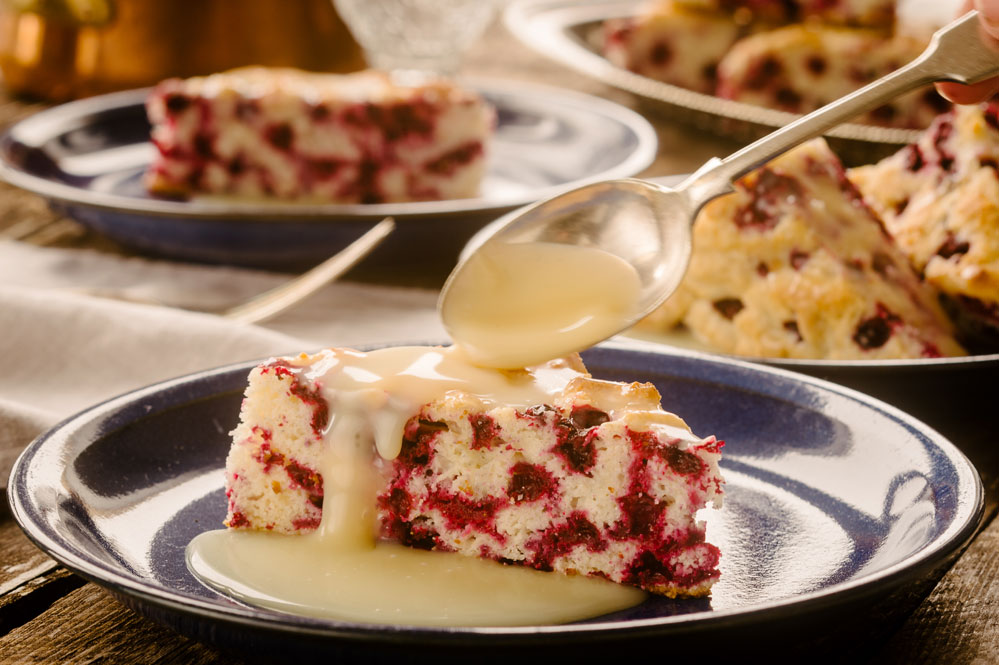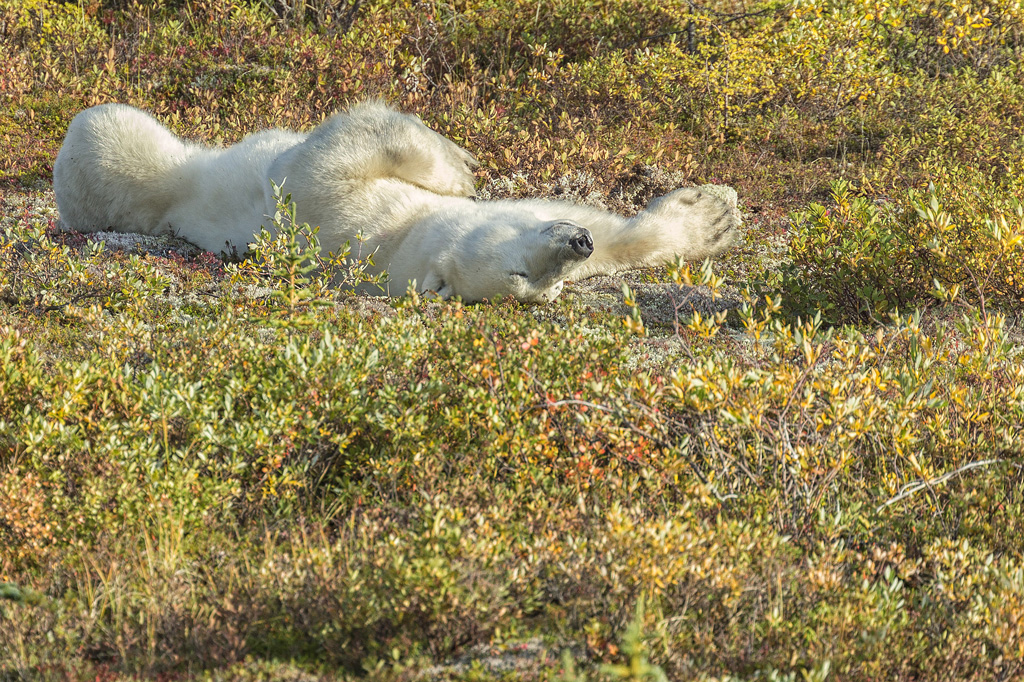by Allison Reimer
In the harsh environment of the Hudson Bay coastline, only the hearty survive, and that includes both the wildlife and the tundra beneath its feet. With a growing season of just 50 to 60 days, it’s a wonder the earth around our northern eco-lodges yields anything at all. If you’re willing to look closely however, the tundra and taiga give much more than they take.
For generations, people living in the north have crawled through the spongy tundra and taiga in search of treasures nestled amidst the willows and lichen-coated rocks. Many a man and bear has thought to take a quick nap on the cushion-soft landscape, only to later discover, much to their chagrin, their fur and fabric bleeding a myriad of berry juices.
It’s a well-kept secret of the Arctic countryside, that come mid-August, berry patches start to appear everywhere you look. Blueberries, cranberries, cloudberries, gooseberries, and the rare wild raspberry blanket the ground. This berry bounty has played a major role in the Churchill Wild culinary experience.
The story begins with two long-time best friends, Helen Webber and Marie Woolsey. Helen and Marie are entrepreneurs in every sense of the word, and one of their most memorable accomplishments has been the publication of four award-winning cookbooks.
A recurring theme in the cookbooks is the incorporation of northern ingredients into most of the recipes. In order to accomplish this, the authors spent hours painstakingly scouring the tundra for its offerings. Helen also enlisted the help of all of her children, including Churchill Wild co-founder Jeanne Reimer, to honour this tradition. Jeanne, along with her husband Mike, also passed down the art of duck walking through the bushes to their children. And so the tradition continues.
These days, you’ll often spot Mike and Jeanne out foraging at Seal River Heritage Lodge. They have spent many of their short afternoon breaks with their children and staff searching the land for its delicious berries and the occasional watercress endeavour to spruce up a salad or appetizer.
The practice of giving their guests the ultimate northern inclusive experience is one Mike and Jeanne have always kept close to the heart of their business. Guests are not only invited to enjoy the delicious fruitions of the tundra, they also have the opportunity to spend an afternoon hand picking the ingredients for their next meal.

Wild Arctic Cranberry Cake with Warm Butter Sauce. A guest favourite! Ian McCausland/Shel Zolkewich photo
Cranberries are one of the more commonly used fruits, as they are always growing in abundance. The little red beauties are an excellent addition to our traditional favourites including Wild Arctic Cranberry Cake with Warm Butter Sauce, Warm Cranberry Chutney Brie, and Cranberry Sauce as a side to delicious goose pie.
Blueberries are an absolute favourite in pancakes, blueberry cobbler, and on the rare occasion, homemade wild blueberry ice cream. These berries are also a favourite for our resident Canada goose, and it can be difficult some years to harvest enough of these berries. It’s well known among Churchill Wild staff that blueberries are not to be wasted! If you drop the bucket you will be required to search the tangles of moss until every berry is returned home. You may discover these blueberries are smaller than those in the grocery store, but they are far superior in taste, having soaked up every ounce of the sun’s sweetness during their short growing season.
Cloudberries are an exclusive joy. Only able to grow on the tundra and in the boreal forest, they resemble a raspberry in shape, but they harbor a flavour as unique as their sunset colouring. Tundra foragers in Norway have nicknamed this berry “highland gold” for good reason. Our favourite way to enjoy these sweet and sour berries is in homemade jelly or jam. The fruit grows on small individual stalks but is always worth the work.
The above represents just a few of the many ways that our chefs at Churchill Wild incorporate local Arctic ingredients into your food. Our ever-changing menu could also present you with locally harvested mussels in garlic butter sauce, fresh baked Red River bread toasted and glazed in gooseberry jam, or a crisp salad with flavours of Hudson Bay’s watercress. High in anti-oxidants and vitamin K, watercress makes an excellent addition to our menu.
There are a few other surprises awaiting you on the tundra as you hike along the jewel-strewn landscape. Fields of wild chamomile are like drippings of sunlight skirting what might otherwise be mundane mudflats. Their petals ruffle gently in the breeze, tickling your fancy to lie among them. This plant brings the feeling of sleep whether in tea or flower form. You can also find the odd bolete mushroom, and copious amounts of Labrador tea.
Not everything is to be treasured in this fearsome tundra-scape though. Amidst the flowers and sea lime grass is a deceivingly pretty plant known as water hemlock. The unpleasant side effect of ingesting the cicutoxin in water hemlock is that it is fatal. Just as we advise our guests to “look, don’t touch” the pretty white bears, we also advise them not to touch these pretty, white flowers.
The Arctic tundra has had an everlasting impact on our hearts and our palates. It can be difficult to bring fresh produce so far north, and our thought has always been to use what’s at the tips of our fingers to satisfy the tips of our tongues.
We’re sure you’ll enjoy the tundra’s bounty too!










